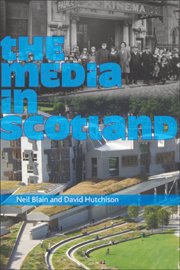4 - The History of the Press
from The Historical Context
Published online by Cambridge University Press: 05 August 2013
Summary
Of the three traditional media – press, broadcasting and cinema – it is the press which has the longest history, stretching back, as it does, for over 300 years in Britain and in Scotland. In what follows there will be an attempt to analyse the changes which have taken place over that period, and to locate these in their social, economic and political contexts. For this purpose the history will be divided into three periods, the first running from the earliest times until the middle of the nineteenth century, the second until the middle of the twentieth, and the third covering the past fifty years. The approach will be broad brush, and, in the hope that present experience can be illuminated by the past, there will be some movement back and forth in time.
ORIGINS UNTIL 1855
Among the earliest documents, which can be regarded as the forerunners of newspapers, are the Acta Diurna, posters detailing social and political events in classical Rome, and newsletters produced in the late Middle Ages by European merchants for their colleagues. Print utilising moveable type was developed in the West by Johannes Gutenberg in the mid-fifteenth century in Mainz (the Chinese had invented the process in the eleventh century). Gutenberg's Bible of 1455 was produced on paper (another Chinese invention dating from the second century), a material then derived from rags, and much more economical for manufacturing books than the animal skin required for parchment. William Caxton introduced the technology to England in 1477, but it was 1508 before it reached Scotland, when Androw Myllar and Walter Chepman opened a printshop in Edinburgh.
- Type
- Chapter
- Information
- The Media in Scotland , pp. 55 - 70Publisher: Edinburgh University PressPrint publication year: 2008



